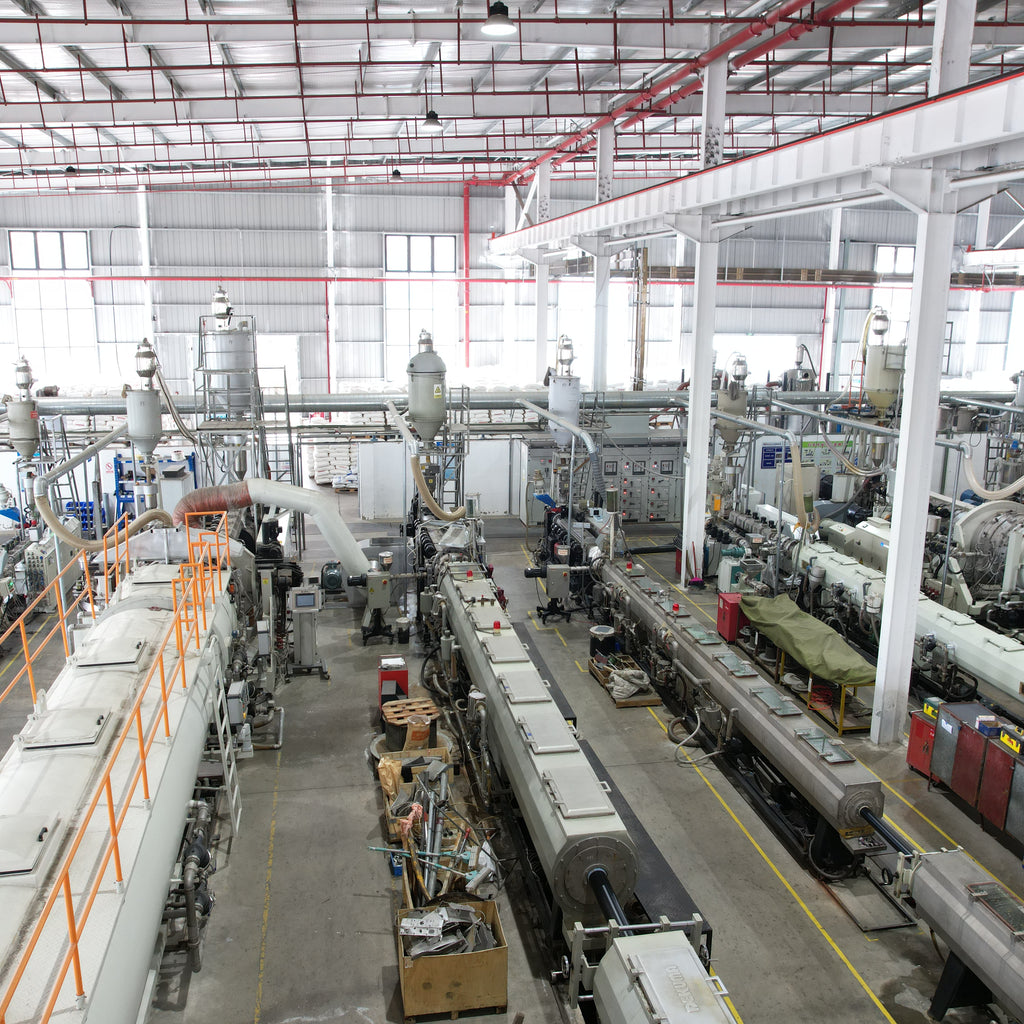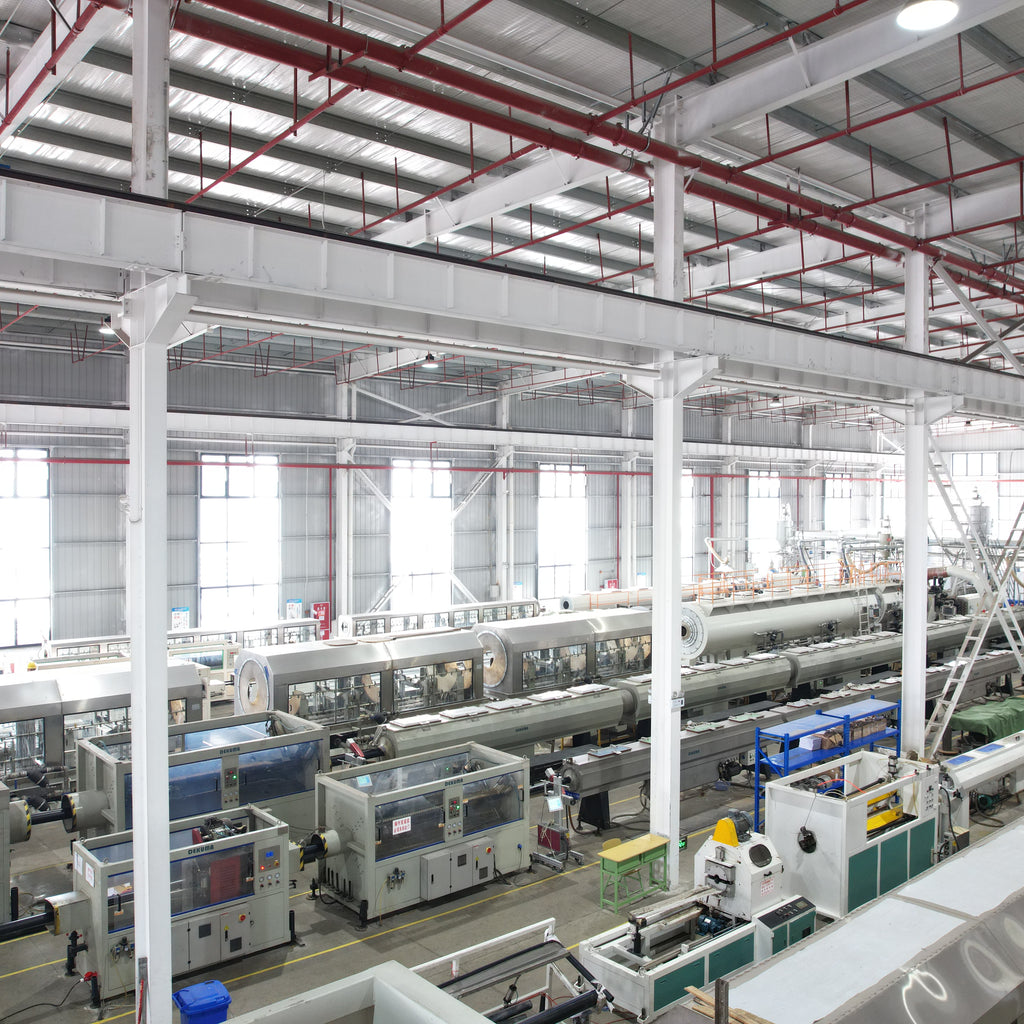MPP (Modified Polypropylene) power corrugated pipes, featuring a "corrugated structure + high-temperature resistance modification" (Figure 1), have become the preferred choice for trenchless laying of 10kV-35kV power cables. Compared to traditional PVC-C pipes, they increase pulling construction efficiency by 40%. However, in long-distance directional drilling (>500m) and large-curvature bends (R < 15D), pipe failures are prominent:
- According to 2024 State Grid statistics, 32% of MPP pipe construction accidents are caused by tensile fractures.
-
28% of municipal engineering reworks are due to bending instability.
Through full-scale pulling tests (referencing CECS 165:2004) and finite element simulation, three failure modes and key parameters were identified:
| Failure Type |
Mechanical Cause |
Typical 工况 |
| Tensile Fracture |
Axial tensile stress > material yield strength |
Straight sections >800m |
| Bending Instability |
Local buckling at curvature radius <12D |
Bend sections crossing roads/rivers |
| Excessive Friction |
Friction coefficient between pipe wall and soil >0.35 |
Silty clay or backfilled gravel strata |
| Parameter |
GB Requirement |
Engineering Pain Point |
| Short-term hydrostatic strength (MPa) |
≥15 |
Instantaneous stress during pulling reaches 12-14MPa |
| Elongation at break (%) |
≥200 |
Actual value only 150%-180% |
| Friction coefficient |
- |
Inner wall Ra >1.0μm |
Using "core-shell" structure modification (Figure 2), ethylene-octene copolymer (POE) and nanocarbon fiber (CNF) were introduced into the PP matrix:
| Material Formula |
Tensile Strength (MPa) |
Elongation at Break (%) |
Notch Impact Strength (kJ/m²) |
|
| Pure PP |
24 |
150 |
4.2 |
|
| PP+10%POE |
22 |
350 |
7.8 |
|
| PP+5%POE+3%CNF |
28 |
280 |
12.5 |
(Optimal solution) |
Modification Effects:
- Tensile modulus increased by 17%, creep resistance enhanced.
- Elongation at break maintained >200%, avoiding brittle fracture.
Orthogonal tests optimized corrugation height (H), pitch (P), and wall thickness (t):
| Scheme |
H(mm) |
P(mm) |
t(mm) |
Ring Stiffness (kN/m²) |
Unit Weight (kg/m) |
Pulling Stiffness Index* |
|
| A |
12 |
25 |
3.0 |
8.5 |
6.2 |
1.37 |
|
| B |
15 |
20 |
2.8 |
9.8 |
5.8 |
1.70 |
(Optimal solution) |
| C |
18 |
15 |
3.2 |
10.2 |
6.5 |
1.57 |
|
*Pulling Stiffness Index = Ring Stiffness / (Weight × Diameter)
Structural Innovation:
-
Variable-section corrugations (crest wall thickness +20%).
- Inner wall with spiral 导流 ribs (friction coefficient reduced to 0.28).
Based on the Hess-McKeown formula, the critical pulling force formula was established:\(T = \frac{\pi D^2}{4} \cdot \sigma_y \cdot \eta\) Where:
-
D = outer diameter, \(\sigma_y\) = material yield strength
-
\(\eta\) = safety factor (recommended 1.5-2.0)
For dn110-dn250mm pipes:
| Stage |
Control Parameter |
Traditional Process |
Optimized Process |
Performance Improvement |
| Pre-Pulling |
Lubricant viscosity (cP) |
300-500 |
800-1000 |
Friction coefficient ↓32% |
| Constant Speed |
Pulling speed (m/min) |
1.5-2.0 |
1.0-1.2 |
Stress fluctuation ↓45% |
| Bend Section |
Minimum curvature radius |
R≥10D |
R≥15D |
Bending strain ↓58% |
Comparison results from a river-crossing power tunnel project:
| Index |
Traditional MPP Pipe |
Optimized MPP Pipe |
Improvement |
|
| Maximum pulling length |
600m |
900m |
+50% |
|
| Minimum bend radius |
12D |
8D |
-33% |
(Suitable for special conditions) |
| Construction period |
14 days |
9 days |
-36% |
|
| Pipe loss rate |
8% |
2% |
-75% |
|
Developed molybdenum disulfide-PTFE composite coating (Figure 3), reducing the inner wall friction coefficient to 0.15, close to steel pipes with plastic liners.
Integrated distributed strain sensors for real-time monitoring of:
-
Axial stress distribution (accuracy ±0.5MPa)
-
Dynamic curvature radius changes in bends (critical value warning)
Conclusion This paper breaks through the mechanical bottlenecks of MPP power corrugated pipes in trenchless pulling construction through material-structure-process collaborative optimization. As a professional supplier, we provide: ✅ Pulling mechanics calculation software ✅ Customized corrugation structure design services ✅ Trenchless engineering risk assessment reports
Keywords: MPP power corrugated pipe, trenchless pulling construction, mechanical performance, GB/T 26671, non-destructive testing



